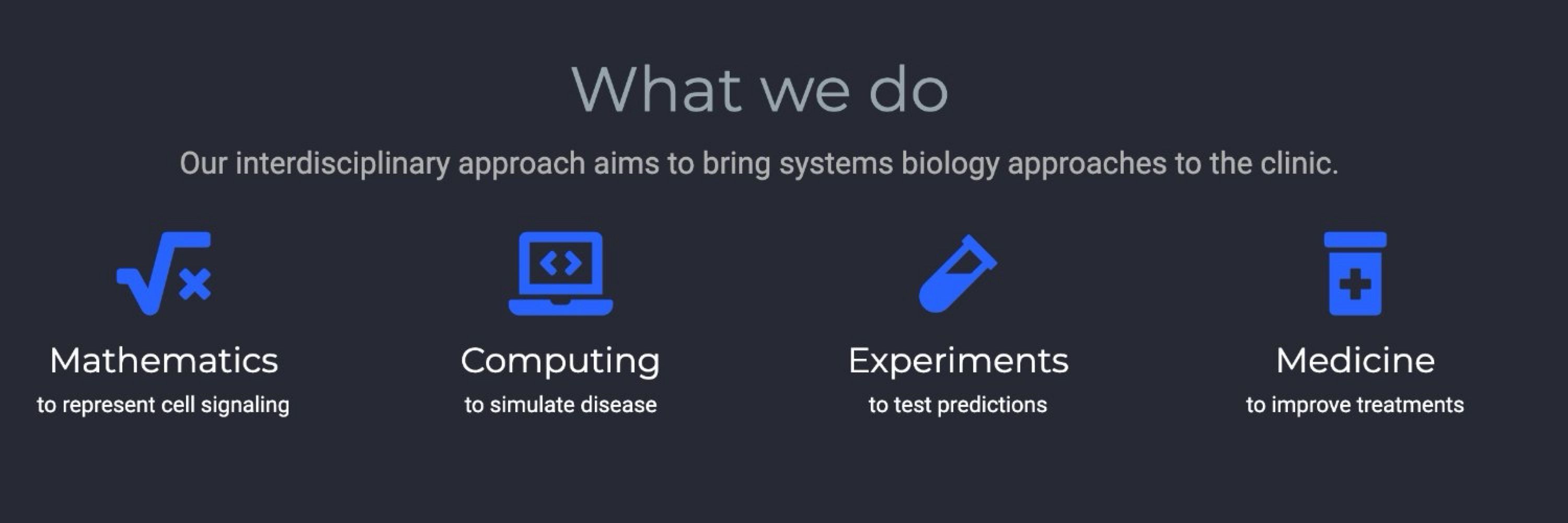
I’m most excited to use my position to repay some of the incredible support I’ve had by supporting others.
🍻
I’m most excited to use my position to repay some of the incredible support I’ve had by supporting others.
🍻
Particularly, Pedro Mendes, Alexander Hoffmann, and @chrispepper68.bsky.social, who supported me in so many ways from PhD, to postdoc, and PI respectively.
Particularly, Pedro Mendes, Alexander Hoffmann, and @chrispepper68.bsky.social, who supported me in so many ways from PhD, to postdoc, and PI respectively.
- Targeting BCL2/MCL1/BCLXL requires unstanding the TME.
- Systems biology can identify inhibitors that make BH3-mimetics great again.
We're now working on clinical translation, making simulations easy to interpret, and in vivo testing of personalised medicine.
end/🧵
- Targeting BCL2/MCL1/BCLXL requires unstanding the TME.
- Systems biology can identify inhibitors that make BH3-mimetics great again.
We're now working on clinical translation, making simulations easy to interpret, and in vivo testing of personalised medicine.
end/🧵
Inhibition of the key regulator of non-canonical NF-kB (NIK) totally neutralises the drug resistance caused by the TME in DLBCL🎉
5/🧵

Inhibition of the key regulator of non-canonical NF-kB (NIK) totally neutralises the drug resistance caused by the TME in DLBCL🎉
5/🧵
Good news: this means Ibrutinib overcomes the TME!
4/🧵

Good news: this means Ibrutinib overcomes the TME!
4/🧵
- culturing DLBCL cells with cells expressing CD40 (to mimick the TME) creates resistance to BH3-mimetics.
- this happens whether you're targeting BCL2 or BCLXL.
- Compensatory upregulation of BCLXL causes resistance.
- In SUDHL8 cells MCL1 also increases. Why!?
3/🧵

- culturing DLBCL cells with cells expressing CD40 (to mimick the TME) creates resistance to BH3-mimetics.
- this happens whether you're targeting BCL2 or BCLXL.
- Compensatory upregulation of BCLXL causes resistance.
- In SUDHL8 cells MCL1 also increases. Why!?
3/🧵
- Established NFκB -> BCL2 link is actually a bit fuzzy (which NFκB subunits control which BCL2 proteins in DLBCL?)
- scRNAseq suggests tumour microenvironment (TME) activates non-canonical NFκB (RelB:p52).
- Can we overcome the protective effect of the TME ?
2/🧵

- Established NFκB -> BCL2 link is actually a bit fuzzy (which NFκB subunits control which BCL2 proteins in DLBCL?)
- scRNAseq suggests tumour microenvironment (TME) activates non-canonical NFκB (RelB:p52).
- Can we overcome the protective effect of the TME ?
2/🧵

